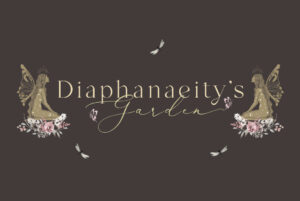What are Goddess Archetypes?
Within each and every one of us, myriad archetypes collectively shape our personality, perceptions, outlook, career orientation, relationships, behavioral patterns, and more. By merging Carl Jung’s archetypal psychology with Dr. Shinoda Bolen’s work incorporating Grecian Goddesses into Jung’s framework, my aim with this project is to enable you to cultivate your personal identity alongside your brand identity through a lens of self-discovery and healing.
Each Goddess Archetype possesses innate attributes, gifts, and qualities she brings to this world. Rather than label or limit us, archetypes are integrated into our identities to create a unified whole. Since your authentic self and purpose live at the core of your brand’s heart & soul, I believe it is necessary to integrate personal development with brand development, allowing them to flourish together.
In her book, “Goddesses in Everywoman,” Dr. Shinoda Bolen describes traits unique to each Goddess which help form the foundational elements of her identity. Qualities such as her state of vulnerability, focus, awareness, traditional role, domain, and tasks for growth all help to form a cohesive view of who she is. By studying the Goddesses and learning from their associated myths which helped shaped cultures long ago, we can nurture and integrate each archetype’s unique strengths, challenges, core motives and stories into our own lives, so as to lead a more fulfilling life.
Each Jungian Archetype is associated with one of the seven Goddesses. The ‘vulnerable’ outward-focused Goddesses are more susceptible to emotional challenges as a result of their close attachment styles. They include Persephone, Demeter, and Hera, while the ‘virgin’ inward-focused Goddesses who maintain emotional distance include Artemis, Athena, and Hestia. According to Bolen, Aphrodite represents the alchemical Goddess who embodies qualities shared by all of the Goddesses. In my visual framework, I depicted The Great Mother as the ‘alchemical’ center since from my perspective, she represents not only the integration of dualities within each Goddess but also the interconnection amongst all of the Goddess Archetypes.
How Do Archetypes Shape Brand Identity?
So, those of you impassioned about forming a new business might now be wondering: what do archetypes have to do with brand identity? The more clarity we gain as to who we are, the easier it is to define and characterize the brand identity we wish to create. Our depth of self-knowledge, creative healing, and self-acceptance all facilitate bringing to life a brand founded on purpose and passion. The Goddess Archetypes have distinct psychological features which are shaped by their respective mythological stories—offering key insights that are incredibly valuable in the process of branding. As each of the Goddesses undergoes her characteristic stages of development, it enables her to cultivate complementary archetypes within her psyche—thus helping to create a unique multidimensional identity standing out on her own.
I further elaborated on Bolen’s work by incorporating additional integral components which I sincerely hope you’ll find helpful. These include the works of trauma therapist Pete Walker, organizations such as Internal Family Systems, first-hand experiences with REBT, my readings on Eastern philosophies, and more. In addition to Bolen’s classifications used in her archetypal analysis, I’ve also included elements from alternative sources which help with clarity while also making the process of branding more holistic and fun. Additional identifiers associated with each particular Goddess include facets such as their archetypal motive, Myers-Briggs classification, zodiac sign, associated flowers and significance, gemstone, numerology, innate gifts, spirit animal, symbology, and more.
All of these identifiers help us gain a more holistic view and appreciation of who we are and the Goddesses we most identify with—further helping to bridge the connection amongst our archetype identity, creative healing, and brand identity. Since I’ve done much of the legwork in turning the analytical into a visual framework, I hope it catapults you from mere analysis to the more creative and exciting facets of branding involving art and design.



